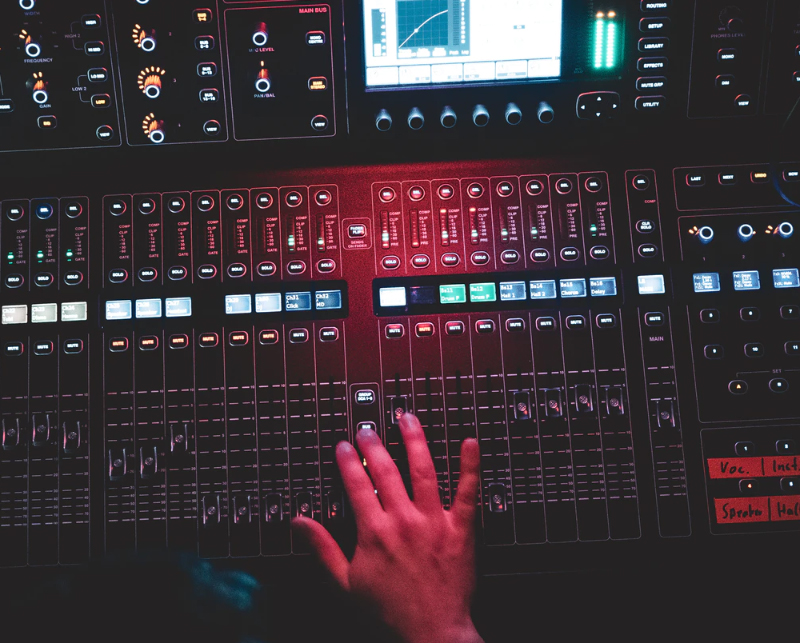How do we teach aspiring audio professionals to mix? How important is teaching? Can some people even be taught?
I’ve seen debates in the ProSoundWeb LAB forums as to whether mixing sound can/can’t be taught.
There are a couple of interesting books I’ve read that relate to this idea. The first one is “This Is Your Brain On Music,” by Daniel Levitin.
Levitin addresses the age-old question of talent versus work effort, and essentially concludes that the real deciding factor of becoming an “expert” in any subject is how much time was put in. And the threshold of 10,000 hours seems to be the right number for someone to be a well-regarded expert in any field.
Levitin even brings up Mozart as an example, since the Austrian composer is often quoted as being someone who had “talent” and was a “genius.” Interestingly, Levitin claims that it was likely Mozart had spent 10,000 hours learning music before his compositions were what we would still want to hear today. Of course by then, he was only 10 years old!
Additional research cited by the author followed violin students in the college environment. It was shown that the difference between the levels of the students towards the end of their education was not due to “talent” but due to how much they practiced.
So what does this mean?
To me, it’s still supportable that Mozart was a genius — in other words, something else was going on beyond just thousands of hours of toiling away learning and practicing musical composition. If not, then why aren’t all the other composers who spent 10,000 hours considered to be just as good as Mozart? And maybe there are examples of genius in our profession — a Phil Ramone or an AI Schmitt, perhaps?
But here’s where I think “This Is Your Brain On Music” gets interesting. In order to learn these new things, there has to be a willingness, or desire, to learn. The subject matter has to seem important to the pupil. And I distinctly remember the difference between subjects that I was interested in and those where I was not.
Math comes to mind. When math was all abstract ideas or things like, “This train left the station at 3 pm, while this train blah blah blah,” then it was as if the concept did not want to enter my brain. Or, rather, my brain didn’t want the concept to enter.
But when math was applied to sound, then I was interested. I learned how algebra applied to filter and power supply designs. I learned how to calculate dB relationships based on changes in voltage or power. Not complex math, mind you, but nevertheless in this scenario, the math was easy. And it was because I wanted to learn it.
Levitin mentions in his book that he often advised that his students would have to “care about the material if you want to do well on the test.” True enough — even though I struggled to get a B on a high school algebra test, I aced just about every one of my audio electronics theory tests, all with the same math.
The Case For Hands-On
The second interesting book I’ve read on this topic is “Participative Learning” by Fredric Margolis and Bonnie Swan.
Sure, I have no doubt that we all know that hands-on learning, or OJT (on job training) as we used to call it in the Air Force, can be an excellent way to learn. One of the main points that Margolis and Swan make is that adult learning is distinct from how children learn.
Here’s what they say on that subject: “The best training is training that gets into peoples’ heads through their thinking, not what gets into their heads through their eyes and ears.” This somewhat flies in the face of the long-held belief that simply by showing someone how to do something that they should be able to do it. Instead, they have to understand why they are doing it before the learning really sinks in.
Hands-on training can, and certainly does, provide this type of understanding, but not always. Just saying, “Do this because that’s how we do things here,” is simply not enough.
What’s perhaps more important is that the student, intern, junior engineer or whatever, knows why, and the background to go with it.
This reminds me of talking with a four-year-old.
Kid: “Why is the sky blue?”
Me: “Because of the nitrogen in the atmosphere.”
Kid: “Why?” and so on.
People really do want to know why we use condenser mics for overheads and an SM57 on the guitar amp. Once they know those things (and thousands of other things like that) they can choose to use those same tools or they may find that different tools work better for them.
Related to this, Margolis and Swan also point out that, “Adults have a deep need to be self-directing.” What this means is that someone in the role of the trainer or mentor must engage them in the process of inquiry, analysis and decision-making rather than simply saying, “This is the way to do it.”
This makes sense, and if you think back to your own roles as a trainer and trainee, you can probably think of the times when you experienced this process both ways.
So, When Do These Two Trains Meet?
Despite the obvious advantages of hands-on and participative learning, there is a lot to be said for book smarts. Certain ideas simply aren’t obvious or even are perhaps counterintuitive until the theory behind them is understood.
How about Ohm’s Law? How about the relationship between decibels and power? Many of the concepts that we deal with must be learned on a deep level before they can be tested and put into practice.
But I’ve also found that a long-term “give and take” process seems to be the most beneficial overall.
It’s simply this:
A) Learn some new idea and give it some thought. Possibly imagine how it might be put into practice.
B) Find an opportunity to put new ideals into practice, or stumble across a problem and realize that a new idea you’ve learned might be helpful here.
C) Take your experiences in the real world back to the books and search for new ideas to give you an edge.
Rinse and repeat.
To a large extent, I think many of us do this automatically. But I’ve always encouraged audio people to “hit the books” or perhaps attend a seminar or workshop, or even sign up for a class.
More knowledge can always help you in general, and help in providing greater value to your clients. Instead of knowing “just enough to be dangerous,” the goal is to know enough to be dangerous to your competitors.
And who knows? The state of the art of our industry might just get pushed forward in the process.
Let’s get back to mixing — I’m not convinced that anyone can actually be taught the art of mixing, meaning the fine nuances that go together with a great soundscape out in the audience.
Nevertheless, the nuts and bolts can be taught. Signal routing is the most basic of tools in this craft. Next comes gain structure. But despite this being such a basic thing, I’ve found that it’s not as widely understood and employed as we would all like to believe.
From there comes the more subtle aspects of individual channel EQ and then overall system EQ. All these things are really basics and for the most part can be taught and learned.
Like the art of musical arrangement in the first place, the fine art of mixing appears to be a talent that not all of us possess. Sure, most of us learn to pull together a decent mix that gets the job done. But what about those shows where you hear a great artist mixed by someone who obviously knows what they’re doing, and you say “wow!”
OK, maybe that doesn’t happen too often, and indeed, many of us probably hear more shows that sound terrible than any other. But believe me—awesome sounding shows do exist.
So how do we teach these skills? How do we learn them?
In my view, the first step is the understanding of “what is music” for your particular style. The second part is to think about how you want to present this music to your audience, i.e., imaging, SPL, coverage, etc.
Then think about the technical requirements to make that happen. Getting familiar with the actual music is paramount — understanding the musical arrangements, who will take solos in what songs, how the vocals are supposed to fit into the mix, etc.
This, in turn, requires an understanding along with the musicians themselves. They should have some input, but it’s up to you to actually mix.
And finally, as we’re doing our job, a fine mixture of humility and thick skin will come into play. We must be open to taking suggestions and putting them into practice.
Mixing is a special job and seems to require a certain kind of personality. Someone who cares about what they’re doing and wants to learn more, extend their skills and their craft, and take the heat when things get challenging.
So it’s time to get out the books, sign up for the seminars, find a mentor and go out there and make things happen. And if you’re an experienced road dog, consider taking some of the “young whippersnappers” under your wing and help them understand why things are the way they are.
They may not thank you now, but they’ll certainly come to know that you were right as they achieve success.















